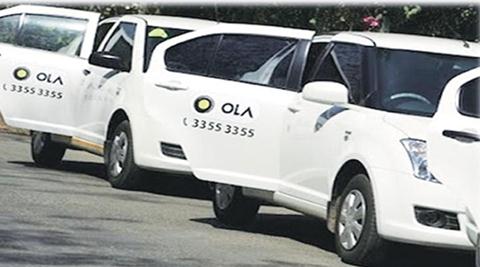Online cab aggregator Ola has been engaged in an intense competitive battle with global rival Uber in India and claims that its market share is three times that of Uber due to their technology innovations. Pranay Jivrajka, COO, Ola, says the constant innovation for the India market has given them the edge unlike its competition which has been more reactive to local market conditions, in an interview with FE’s P P Thimmaya. Excerpts:
How has technology innovation created the differentiating edge for Ola?
We have been in the heart of building mobility in India, for that you have to constantly innovate. Our goal is how do you through technology innovation make it more inclusive and cater to more number of customers. This would mean how do we improve the experience of the customers which ultimately leads to increase in frequency of usage. We had our bit of innovations. It has four stages: while booking a ride, during the ride, completing the ride and what more can you do to bring in more loyalty. These are all grounds for solutions depending on the needs. For example, when we moved to tier 2 & 3 cities we realised that we need an offline environment because of poor connectivity so we enabled bookings via SMS. Demonetisation brought us on our toes and Ola credit came into play. Similarly, Ola share is a big innovation, where our mapping algorithms on the top of the map layout create a high level of accuracy. This has to be optimised so that there is minimal waste time. The recently launched Ola play which deals with auto connect opens up a lot more possibilities. These are a few innovations that ensure there is constant improvement in customer experience.
How do you compare Ola’s innovative solutions with that of Uber?
We are making substantial investments both in financial and innovation capital. Our competition’s innovation cannot be adopted to needs. Uber talks about cash payments which they say is innovation for India. This is not an innovation but a realisation. Before demonetisation at least, cash was the real answer. Uber is talking of customising for India. What differentiates between adoption and innovation is that adapting is more of a necessity, which is not necessarily groundbreaking or valuable. It probably helps in reaching out to a larger number. But where innovation really helps is in changing the behaviour and experience of the consumers. We have done quite a few ground breaking innovations like booking a cab without internet connection. No one has done it on our scale. In our view, we have not seen one single innovation coming out from competition that is made for India till date.
Will the higher financial resources of Uber make a difference against Ola?
We are well capitalised and third party reports indicate that we are close to three time their size. We have shifted this competition from a capital war to an innovation war, that is the real reason why we have this market share and continue to be the differentiator.
What can we expect from Ola now in new technology innovations?
Our focus is always on growth and building customer experience. Things like offline booking service, 2G optimisation to name a few helps us to launch anywhere in the country, even in places where connectivity is poor. The Ola play auto connect takes one to the next level of experience. We did a few innovations in high congregation areas like airports, railways through creation of hotspots.
How does Ola view the global drive towards autonomous cars?
It is not a far away solution for the West but for India there is still some time before we reach that stage. India needs the investment towards infrastructure and mobility before we get to autonomous cars. We feel that shared mobility has to take the centre stage and later look at sustainable mobility like electric cars. This is our short and mid-term vision. Autonomous cars will happen but there is no time frame for this.
What has been the impact of demonetisation on Ola?
We reacted pretty fast to this development. We have seen 15 time increase in our e-wallet usage. Ola Money has also witnessed three time increase in usage outside our mobility platform. We have also done certain high impact but small innovations like Ola credit. We have not just enabled our customers to transition towards digital economy but also our drivers. We also entered into partnerships to increase the usage of digital currency transactions besides taking steps the ease the crisis of cash crunch.

